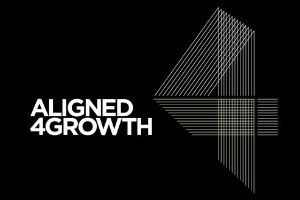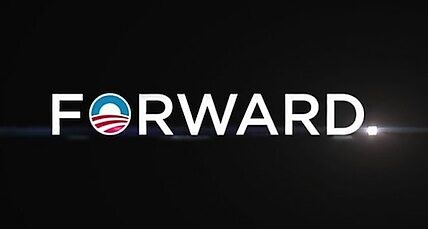Small businesses across all industries have been placed under immense pressure over the last 18 months.
Supply chains have been challenged, customer buying behaviour has changed and business continuity has been challenged due to ongoing lockdowns.
The small business owner is taking the brunt of these challenges.
This article is aimed at all small business owners providing you with a guide on what you can do to minimise the impact of the uncertainty and get you to the other side of this crisis by planning for the worst.
Uncertainty
Experts predict that uncertainty will continue well into late 2021, and highly likely beyond as we learn to live with this virus.
Due to the uncertainties regarding the timing and duration of restrictions and their impact, it has been extremely difficult for small businesses to plan their activities to ensure the necessary customer interactions to deliver a consistent income.
It is with this context, that the recommendation for small businesses is to accept that these uncertainties will continue.
There is no more important time than now for a business to have a financial plan, and to review this plan regularly.
Planning for challenges starts with understanding and managing your costs.
Cost structure
With the uncertainty of income generation, the small business owner must be managing their costs – both fixed and variable.
It is also critical that the small business’ cost structure is set up to provide flexibility and the ability to adapt to whatever the future entails.
Recommendations would be:
- Be on top of your cost structure at all times
- Look to reduce and lock in any fixed costs
- Look to defer any discretionary spend
- And if you are reducing costs, make sure that the focus is on securing your business’ near-term viability
The term fixed costs apply to any cost that is necessary on a recurring basis for the operation of the business.
Examples of fixed costs within the business might include:
- Rent
- Supplies
- Debt repayment
- Payroll
- Taxes
- Insurances
Typically, the largest costs for a small business are Rent, Payroll and Materials / Supplies. At this particular time, these need to be constantly reviewed and where possible reduced.
Examples of actions to reduce fixed costs:
- Having a conversation with your landlord could allow you to reduce your rent
- Reviewing your staffing model, and changing the mix of permanents and casuals, could allow you to reduce your payroll costs
- And a review of alternate suppliers could also give you the ability to reduce your supplier costs
Variable expenses are those that change depending on how much you use the service. Many of these are necessary for your business to stay in operation, like utilities.
You will also find expenses in here that are not necessary for the function of your business, but would be nice to have, like education, or extras that can increase profitability. Those are called ‘discretionary expenses’, which you can roll into your variable expenses budget as well.
Some examples of variable expenses are:
- Owner’s salary
- Replacing old equipment
- Office supplies
- Professional development
- Marketing costs
- Utilities
During these times, you will need to lower your business variable expenses, beginning with discretionary spending.
Now, it is important to note that not all costs are equal. The focus should be on securing your business’ near-term viability and positioning your business for the medium-term.
Putting it another way, be careful when reviewing and potentially cutting costs. Do not remove all of your sales and marketing investment. Ultimately, your business needs to grow out of this situation by ensuring it has a sales and marketing strategy that increases demand for your products or services.
Understand your customers
At this time, your customers also are going through the same issues as your business.
For some small businesses, the emphasis has been on identifying new customers and neglecting their existing customers. While identifying new customers is always important, at this time businesses must also focus on their existing customers.
It is recommended that you increase your dialogue with these clients/customers, understand what they need at this time and consider how you can pivot your business to support these requirements.
Remember, there are lots of examples of small businesses thriving this year. Through discussions with their customers, many have identified their Product / Service may not have the traction it once did and readjusted their Product / Service offerings.
It is a matter of looking at what opportunities exist for you and seizing these as fast as you can.
Challenge creates opportunity.
Do not postpone the hard conversations or hard decisions
Whether it is talking to your landlord, laying off staff, pivoting or accepting that you need government assistance to ride out this current challenge, do not put off making the hard decisions.
Review your financials with a fine-tooth comb and reduce costs in your business where you can, as outlined above.
And, make the tough calls as early as you can, otherwise, you are going to end up paying for your hesitation down the track.
Look for and ask for business assistance
Many grants and financial lifelines are being offered by federal, state and local governments, so make sure you check your eligibility and apply for what you can.
Additional government policies designed to help small businesses recover into next year are in the pipeline, so check again in a couple of months as the eligibility goalposts may have shifted.
Look for financial advice
Now is also a time for self-reflection.
It is strongly recommended that you seek advice from an external party – someone who can assist you with understanding your situation and to assist with formulating personal and business financial goals.
Who is your financial advisor?
Ask for Support
Finally, these are difficult times for you as a business owner.
Understandably, business owners are going through a whole lot of emotions at this time.
If you are struggling, please be aware that your situation is not unique – there are many others in similar situations.
Again, there is support out there.
Examples:
My Business Health | Australian Small Business and Family Enterprise Ombudsman (asbfeo.gov.au)
Supporting you through the Coronavirus pandemic – Beyond Blue
Also, feel free to reach out to me, or the Aligned 4 Growth team for a confidential no-obligation chat.
Aligned 4 Growth is a team of experienced business advisors and mentors supporting business owners to achieve their income and freedom goals and business aspirations. For more information refer to www.aligned4growth.com.au.


Recent Comments